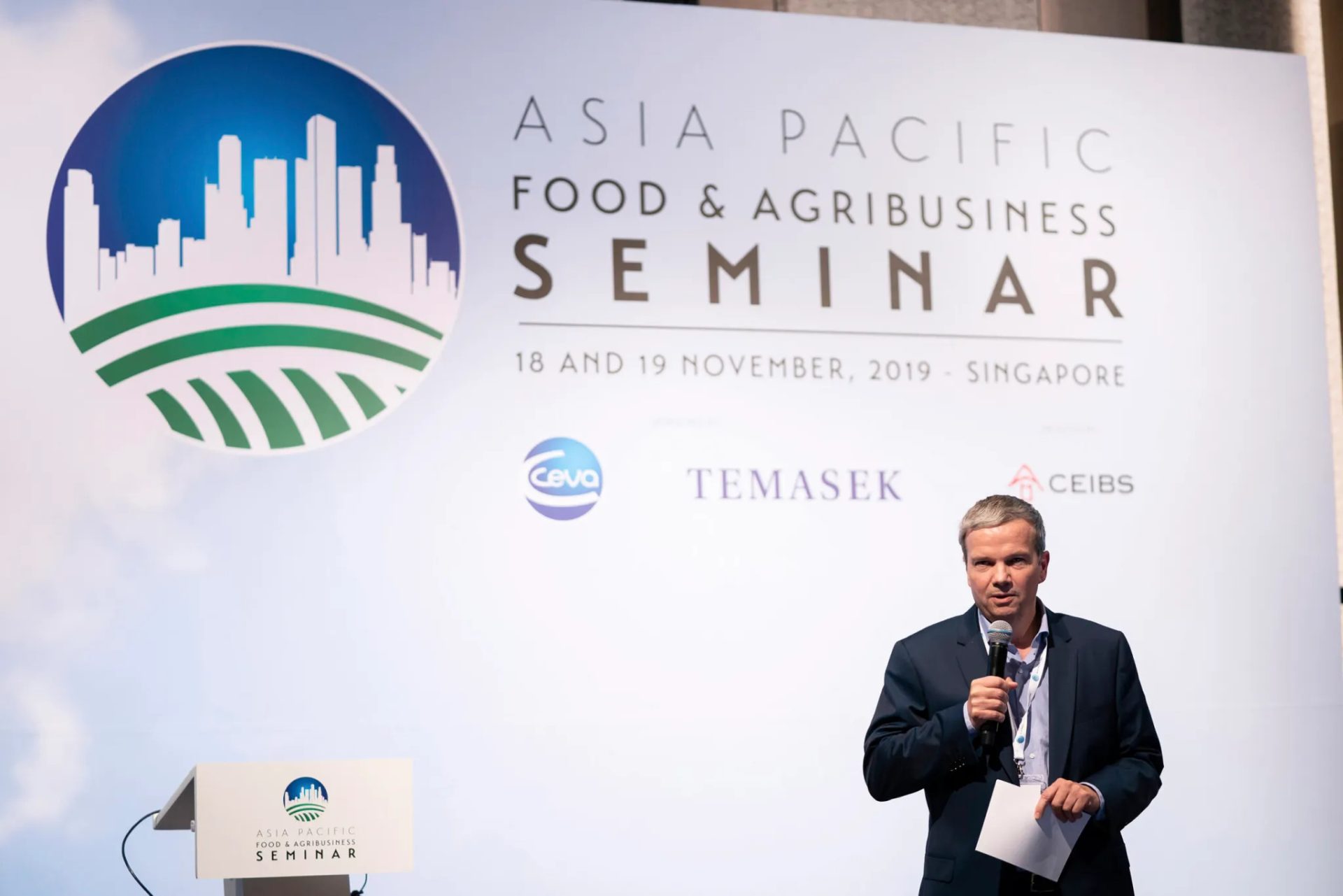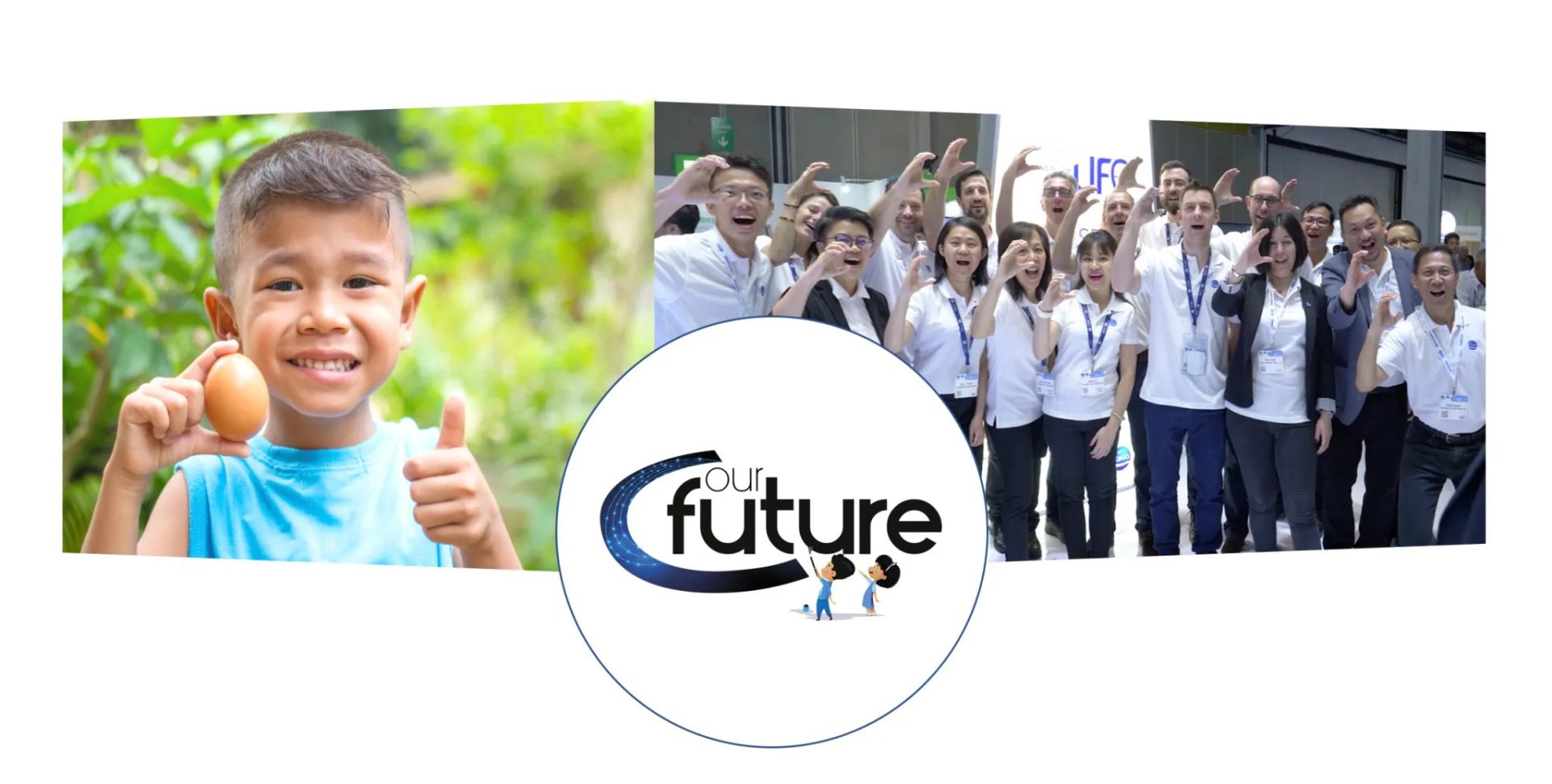

Recently I attended the 2019 Asia-Pacific Agri-Food Innovation Week, held in Singapore in late November. This annual event focuses on the latest innovations and opportunities in Asia’s agri-food supply chain, and considers new models for technology investment, incubation and commercialisation. To accompany the event, The Asia Food Challenge report¹ was launched.
By 2030, the Asian population will have increased by 250 million people.
The report paints a vivid picture of the challenges and opportunities that Asia will face by 2030. By then the Asian population will have increased by over 250 million people² – equivalent to another Indonesia. Increasingly, these people will live in cities, including huge megacities. In 2030, two-thirds of the world’s middle class will live in Asia³ and these more affluent and better-connected people will demand better quality food that is more nutritious, fresh, safe and convenient.
Between 2019 and 2030, the annual Asian food market will double in value to USD 8 trillion⁴.
However, already the continent is struggling to feed itself: imports of food have tripled since the year 2000⁵. Asia will be especially hard hit by the impacts of climate change: the amount of land available for farming will reduce as sea-levels rise, extreme weather events will occur more frequently, pest and disease burdens will increase – witness the devastating impact on food supplies caused by the ongoing African swine fever outbreak.

Although Asia is home to some of the largest livestock farms on the planet, perhaps surprisingly, still today
80% of all the food consumed in the continent comes from smallholder farms⁶.
Just before the event in Singapore, a special edition of the academic journal Animal Frontiers was published. It was subtitled ‘Foods of Animal Origin: a prescription for global health’⁷. The special edition reviewed the evidence that demonstrates how nutrient-rich meat, milk, and eggs can efficiently boost nutrient-poor diets, either as part of the normal diet or if access is increased through interventions. It specifically reviewed the evidence for the role of livestock products in the critical first 1,000 days of life in low- and middle-income countries. Finally, it dispassionately considered these benefits in the context of additional positive and negative impacts on human health, the environment, societies and economies.
During the Agri-Food Innovation event, ‘Developing a safer food system farm to fork in Asia’, I highlighted an exciting initiative by a group of Ceva’s ‘Millennial Managers’ from Asia. Challenged to come up with a new corporate social responsibility project, they did their research and settled on tackling the enormous problem of child malnutrition.
Of the 5.6 million children under 5 years old who die globally each year, 45% of these deaths are due to undernutrition.
The facts are shocking: of the 5.6 million children under 5 years old who die globally each year, 45% of these deaths are due to undernutrition⁸. Stunting – caused by undernutrition that impairs normal growth and development – affects 165 million children globally; 2 in every 5 children in S.E. Asia are stunted⁹.
Our managers’ response was to launch the C our future campaign to draw attention to the problem of malnutrition of children in the region. They also implemented a simple solution: promoting the benefits of consuming eggs and chicken meat to disadvantaged families, and also providing an egg a day directly to poor families with young children. Eggs are a near perfect source of high-quality protein and other micro-nutrients critical to support normal development.

A recent study in Ecuador showed that supplementing nutrient-scarce diets of children 3 to 9 months of age with just one egg per day for 6 months increased child height and the prevalence of stunting was nearly halved compared with children on the traditional diet¹º. That’s why the C our future campaign is so important.

Unfortunately, the already complex and challenging food and nutritional situation is further complicated by the issue of food safety. WHO informed us that globally, 1 in 10 people fall ill every year from contaminated food and 420,000 people a year die as a result of food-borne diseases, a third of whom are children¹¹. A recent report estimates that 35% of all food-borne disease is caused by livestock products¹².
The Asia Food Challenge report highlights the huge investment opportunities as an enormous and largely urban middle-class demand better quality food. As businesses rush to take advantage of these opportunities and the regulatory environment around food is tightened, there is a danger that the middle classes’ demand for safe, nutritious, convenient foods will take attention away from the more basic needs of the poor. For them the imperative is access to even small amounts of meat, milk and eggs to supplement nutrient-poor diets.
Poor people mostly obtain the little meat and eggs they can afford from informal markets which lack facilities such as refrigeration, clean safe packing materials, health and veterinary inspection – and in some cases, even clean, running water. Although the meat, milk and eggs that are sold are usually much less expensive than those sold in formal markets, food safety and hygiene standards are often much lower, enhancing the risks associated with consuming these nutrient-rich foods.
Fortunately, there are things that can be done. Firstly, diseases can be prevented on the farm – whether production is large-scale commercial or backyard – by routinely using vaccines and observing good biosecurity practices. Of course, Ceva produces a very wide range of highly effective and innovative vaccines. We also strive to support farming at all scales and all across the globe.
So, we do not have to make this impossible choice between food security on the one hand and food safety on the other. With simple steps, such as providing just an egg a day to vulnerable children, we can go a long way to solving the issues faced by our children and the most vulnerable members of society.
¹ Skinner, R., Chew, P. and Maheshwari, A. (2019) The Asia Food Challenge report: Harvesting the future. PwC, Rabobank, Tamasek.
² UN Department of Economic and Social Affairs. World Population Prospects 2019. Data Booklet. Annex Table: Key Indicators, p.13 It states: 2019 population Asia = 4,601,371,000; 2030 = 4,974,092,000. Difference = 273 million
³ Global Economic Development at Brookings: The Unprecedented Expansion of the Global Middle Class, https://www.brookings.edu/wpcontent/uploads/2017/02/global_20170228_global-middle-class.pdf
⁴ Skinner, R., Chew, P. and Maheshwari, A. (2019) The Asia Food Challenge report: Harvesting the future. PwC, Rabobank, Tamasek – based on PcW analysis of data from World Bank, IMF, OECD-FAO, USDA, Capital IQ
⁵ Skinner, R., Chew, P. and Maheshwari, A. (2019) The Asia Food Challenge report: Harvesting the future. PwC, Rabobank, Tamasek. Quoting unspecified FAO data. Note: data from https://wits.worldbank.org/CountryProfile/en/Country/CHN/Year/2000/TradeFlow/EXPIMP/Partner/all/Product/16-24_FoodProd for China show net imports increased 2.4 fold between 2000 and 2017 (Keith Sones’ calculations)
⁶ Skinner, R., Chew, P. and Maheshwari, A. (2019) The Asia Food Challenge report: Harvesting the future. PwC, Rabobank, Tamasek – direct quote attributed to President, Asia-Pacific, Corteva ( https://www.corteva.com/ )
⁷ https://academic.oup.com/af/issue/9/4
⁸ https://data.unicef.org/topic/nutrition/malnutrition/ Malnutrition. April 2019. It states:“Nearly half of all deaths in children under 5 are attributable to undernutrition; undernutrition puts children at greater risk of dying from common infections, increases the frequency and severity of such infections, and delays recovery.”
⁹ https://data.unicef.org/topic/nutrition/malnutrition/ Malnutrition. April 2019. It states:“Between 2000 and 2018, stunting prevalence globally declined from 32.5 per cent to 21.9 per cent, and the number of children affected fell from 198.2 million to 149.0 million. In 2018, nearly two out of five stunted children lived in South Asia while another two out of five lived in sub-Saharan Africa.”
¹⁰ Iannotti LL et al. (2017) Eggs in Early Complementary Feeding and Child Growth: A Randomized Controlled Trial. Pediatrics. 2017 Jul;140(1) https://pediatrics.aappublications.org/content/140/1/e20163459.long It states: “This randomized controlled trial showed that eggs introduced during infancy increased length-for-age z score by 0.63 and reduced stunting by 47%. There was no evidence of egg allergies. Eggs, generally affordable and accessible, have the potential to contribute to global stunting targets.”
¹¹ https://www.who.int/health-topics/food-safety/
¹² Li M, Havelaar AH, Hoffmann S, Hald T, Kirk MD, Torgerson PR, et al. (2019) Global disease burden of pathogens in animal source foods, 2010. PLoS ONE 14(6): e0216545. https://doi.org/10.1371/journal.pone.0216545 It states: “We present the human disease burden associated with 13 pathogens (bacteria and parasites) in ASF, based on an analysis of global burden of foodborne disease (FBD) estimates of the WHO Foodborne Disease Burden Epidemiology Reference Group. In 2010, the global burden of ASF was 168 (95% uncertainty interval (UI 137–219) Disability Adjusted Life Years (DALYs) per 100,000 population, which is approximately 35% of the estimated total burden of FBD.”
